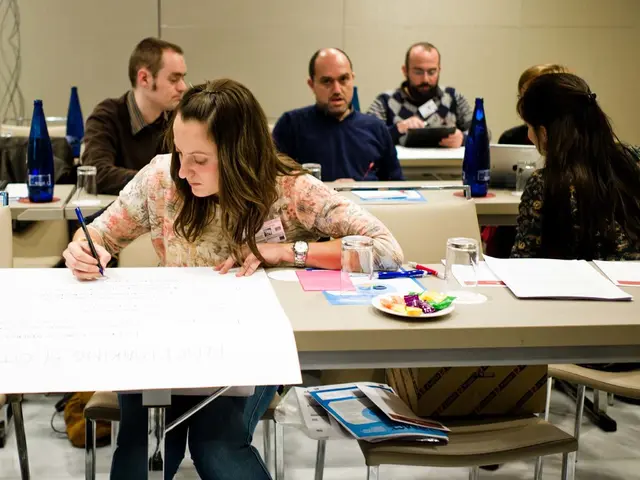Exploring Integration Strategies in Psychology: A Look at Adaptation and Absorption
In the realm of cognitive development, two crucial processes help individuals adapt to new information and experiences: assimilation and accommodation. While these processes work together to facilitate learning and intellectual growth, they differ in their mechanisms and outcomes.
Assimilation, a conservative process, aims to maintain cognitive stability by integrating new information into existing mental frameworks, or cognitive schemas. For instance, a child who already knows the concept of a "dog" might call a cat a dog because it has four legs, fitting the new information into their existing understanding. This process allows individuals to interpret new experiences using their current knowledge, maintaining cognitive equilibrium.
On the other hand, accommodation occurs when new information doesn't fit existing schemas, necessitating modifications to those schemas to incorporate the new data. This process leads to changes in cognitive structures to reduce disequilibrium. For example, a child who initially calls a pony a dog must adjust their schema once corrected, differentiating between "dog" and "pony," possibly creating a broader category such as "four-legged animals."
The difference between assimilation and accommodation lies in their approach to new information. Assimilation incorporates new info into existing schemas without changing the schemas themselves, while accommodation modifies schemas to fit new information.
These processes contribute to a continuous cognitive balancing act called equilibration. Assimilation maintains stability, while accommodation triggers learning and development by adapting mental frameworks to new experiences. Accommodation is more likely when an individual is transitioning between developmental stages, while assimilation often precedes accommodation by initially fitting information into known schemas.
In summary, assimilation and accommodation are complementary mechanisms that underpin cognitive development by helping individuals integrate or restructure their understanding to cope with new experiences, facilitating learning and intellectual growth. Assimilation forces individuals to adjust their thinking, leading to cognitive growth and development, while accommodation is driven by the constraints and challenges posed by the environment, pushing individuals to move beyond their egocentric perspectives towards a more objective understanding of the world.
- Psychology, particularly in the domain of education and self-development, emphasizes the importance of the interplay between assimilation and accommodation in cognitive development.
- Assimilation, a process of maintaining cognitive stability, aids in the consolidation of new information within established mental frameworks or cognitive schemas, fostering learning and growth.
- Conversely, accommodation, which occurs when new information conflicts with existing schemas, encourages the modification of these schemas to accommodate the novel data, promoting intellectual development and a broader understanding of the world.




